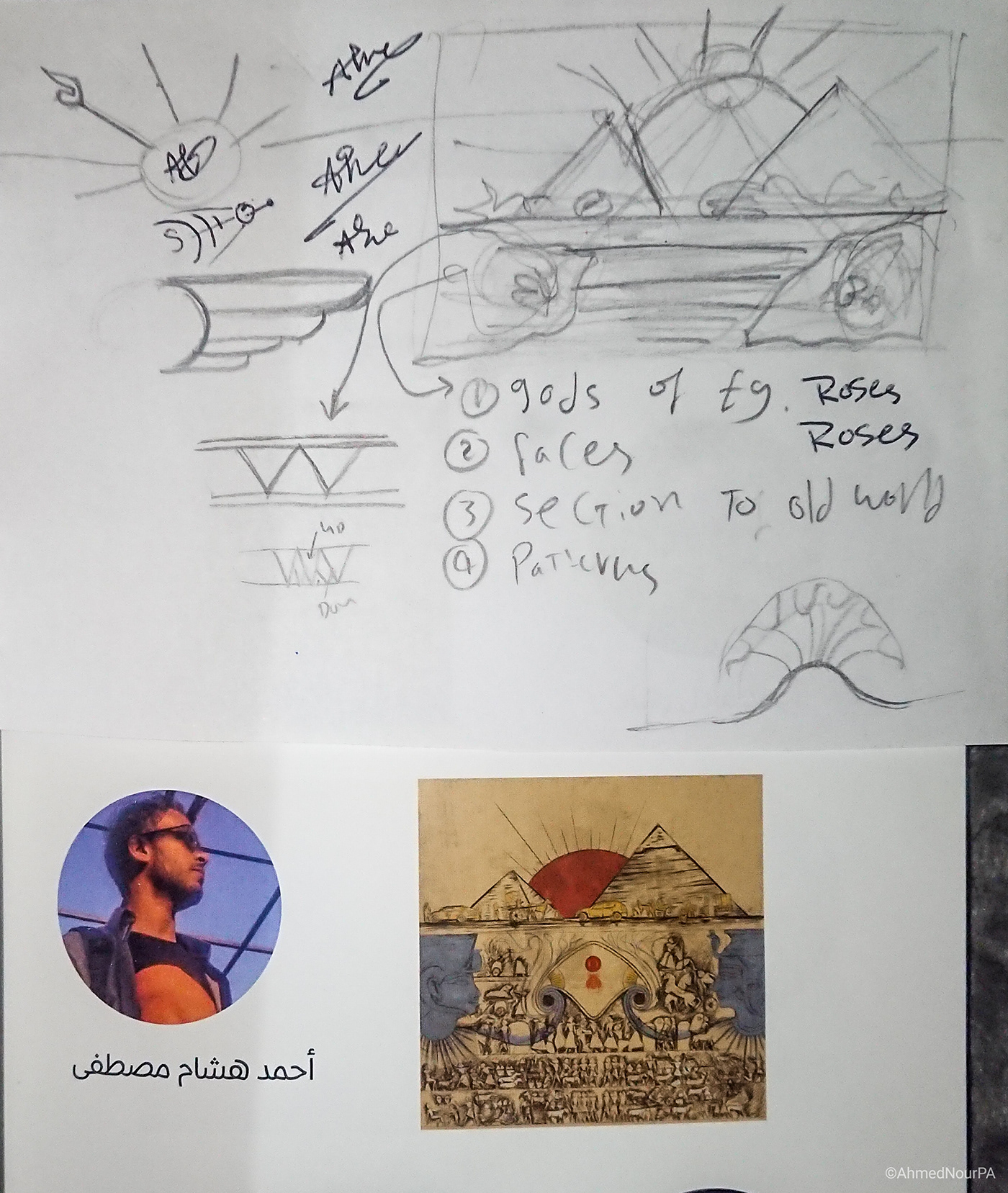


The scarab beetle is symbolic of Khepri, the Egyptian sun deity who represents creation and rebirth. On this relief panel, Khepri is depicted solely as a scarab beetle. Above his head the sun god holds the Duat, a symbol for the afterlife. The scarab stands on a sun disk with sun rays extending downwards.






ROYAL PORTRAITS (Thebes-18th, 19th & 25th Dynasties)
A selection of portraits from Theban tombs and temples reveals that, contrary to the belief of Prisse's contemporaries, the facial features of all royalty were not depicted in the same manner. The figure above left represents Haremhab from the tenth pylon of the temple of Karnak. Facing him is Tausert, wife of Seti II from her tomb in the Valley of the Kings.
Below are figures of Nubian royalty. The woman left, depicted in the tomb-chapel of Princess Amenardais I—god's wife of Amun—is possibly the princess herself. The portrait of King Taharqa right, of the same family, appears on the columns of the eastern colonnade he had erected at Karnak
A selection of portraits from Theban tombs and temples reveals that, contrary to the belief of Prisse's contemporaries, the facial features of all royalty were not depicted in the same manner. The figure above left represents Haremhab from the tenth pylon of the temple of Karnak. Facing him is Tausert, wife of Seti II from her tomb in the Valley of the Kings.
Below are figures of Nubian royalty. The woman left, depicted in the tomb-chapel of Princess Amenardais I—god's wife of Amun—is possibly the princess herself. The portrait of King Taharqa right, of the same family, appears on the columns of the eastern colonnade he had erected at Karnak
THE CAMP OF RAMESSES II IN HIS CAMPAIGN AGAINST THE HITTITES (Thebes, Ramesseum-19th Dynasty) 103
The many temples built by Ramesses II preserve scenes of his battle at Kadesh against the Hittites, fought early in his reign. This scene adorns the first pylon of the Ramesseum, the king's mortuary temple in western Thebes. In the camp, Egyptian soldiers are preparing for the battle; in the center, near the royal tent, Hittite spies are being beaten to confess the enemy's position. Above right, Hittite chariots are attacking the Egyptian camp.
The many temples built by Ramesses II preserve scenes of his battle at Kadesh against the Hittites, fought early in his reign. This scene adorns the first pylon of the Ramesseum, the king's mortuary temple in western Thebes. In the camp, Egyptian soldiers are preparing for the battle; in the center, near the royal tent, Hittite spies are being beaten to confess the enemy's position. Above right, Hittite chariots are attacking the Egyptian camp.









THANK YOU




